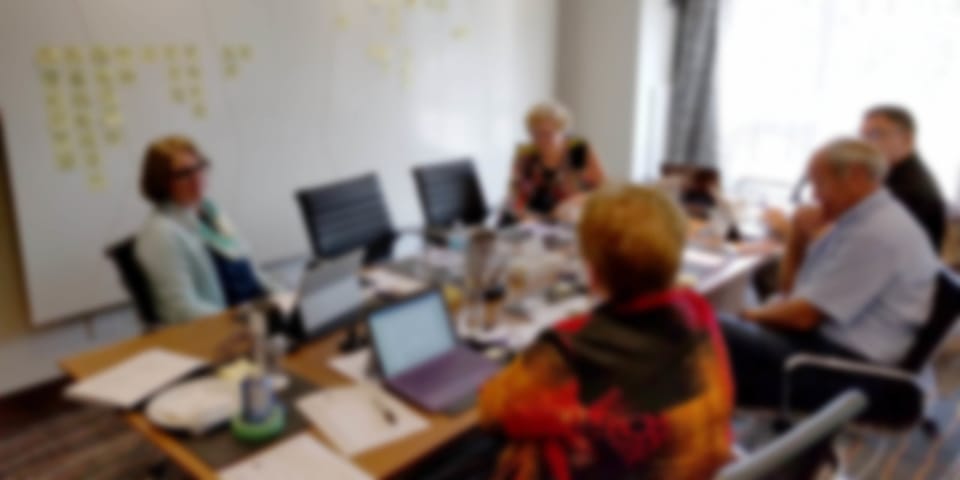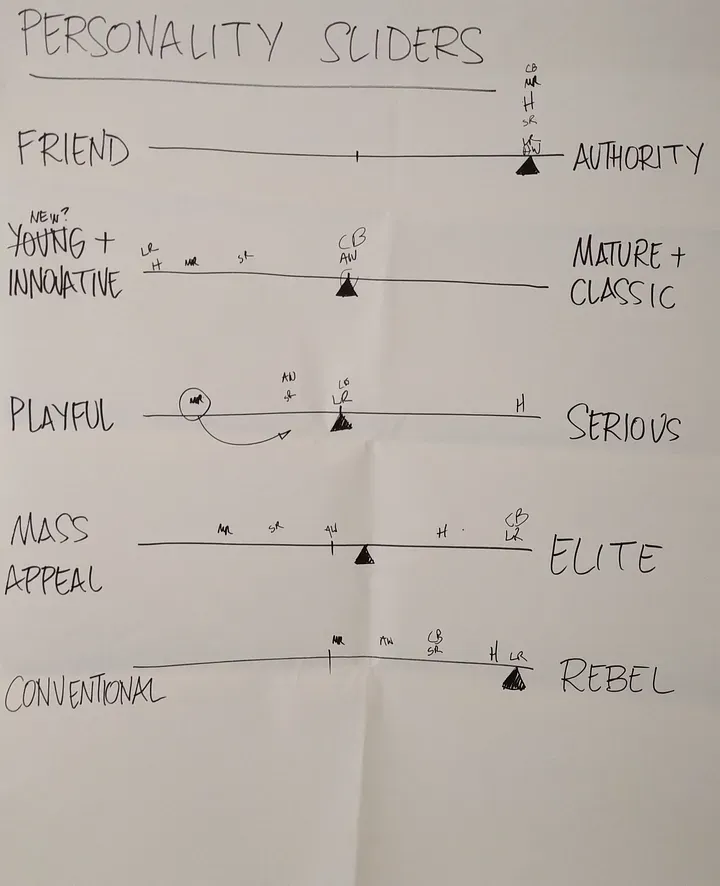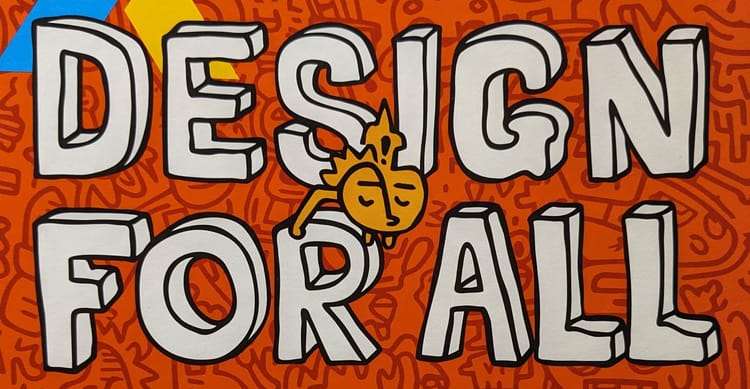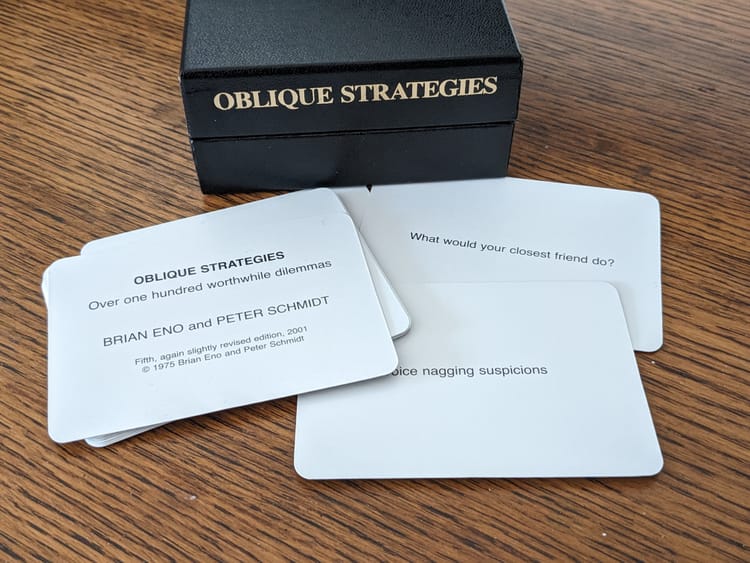Three Branding Sprint surprises

Earlier this week, I ran a Google Ventures (GV) Branding Sprint. It was the first time I’d run such a sprint but, having some experience with both facilitation and Design Sprints, found the description provided by the GV team to be straightforward and easy to apply. The six exercises provided are well designed (with a few minor issues) and, at the end of the half day, our group had a much better collective understanding of how we wanted the product and our organization to be received by our users and the world.
While preparing for the sprint, I had three concerns. First, the team I was working with was actually my team. When actively participating and facilitating, not only is it difficult to remain detached and unbiased during discussions but facilitation consumes both personal energy and time. I’m not sure I’d have done it for a longer stretch, but three hours (the length of a Branding Sprint) was manageable.
Second, two of the six sprint participants had, for all intents and purposes, never met or worked with the rest of the team! As a facilitator, it sometimes helps to know the group dynamic beforehand but, in this case, the team would be spending time together, learning about their new colleagues, the product, and the organization and I wasn’t sure if there would be any bumps.
Third, while this is a new product, the organization is mature, with well defined and passionately held values and goals, and with expertise in the domain. Would the team be able to approach the branding of the new product with fresh eyes and open minds?
Our team had blocked off an entire day to work on this new product: the first half of the day was the Branding Sprint, and the second half was spent exploring product design. Of the six exercises used in the Branding Sprint, three really inspired our team to some great discussion: Top 3 Values, Top 3 Audiences, and Personality Sliders. [n.b. Personally, as a relative newcomer to the industry, the Competitive Landscape exercise was incredibly useful; I learned more in 15 minutes than I could have learned from days of searching online.]
This brings me to the first unexpected windfall of the Branding Sprint. By the end of the sprint, the two new team members were comfortable and confident enough to represent the organization and the product — they were asking questions and justifying positions that showed understanding of both. At one point, the Branding Sprint ‘decider’ said, “What a perfect way to introduce people to our organization!” I absolutely agree.
I also noticed a change in mental tack in team members who had lived and breathed the organization’s values and mission for years. Given this was my first Branding Sprint I won’t generalize but, in this case at least, the exercises allowed veteran team members to reassess (or even just reaffirm!), in a safe way, their understanding of their organization’s values and place in the market. This was the second unexpected benefit of the Branding Sprint: the exercises encouraged the team members to step back and take stock in non-obvious ways. Given the low cost of the sprint, it might be a good investment on a regular basis for mature products (or teams, or companies, etc.) as well as new ones.
As an established organization with a healthy portfolio of products, I was surprised at the radical ideas being proposed (relatively speaking). People had taken my guidance to ‘think big’ seriously and were considering alternative product positions and partnerships. I’m not sure that, had we been sitting in a meeting room at the office (we were offsite) just discussing ‘what to do next’ we would have been so bold. The unfamiliarity with the process, the paradoxical freedom and constraint of three short hours, and trust in the team all seemed to foster creativity and exploration.
If you’re going to run a Branding Sprint (and I encourage you to do so!) I’d offer a few pieces of advice.
First, temper expectations. There may be someone who wants to write slogans or sketch logos, but that isn’t the purpose of the Branding Sprint (although the artifacts that come out of the sprint will certainly inform later, more concrete work). There is only so much a group can get done in three hours, so make a note of your questions or concerns, but keep on task (which, admittedly, requires teams to trust the facilitator).

Second, be flexible and roll with changes. For example, one of the Personality Sliders was labeled ‘Young and Innovative’ (at one extreme, and ‘Mature and Classic’ at the other), which struck some as odd — surely you can be ‘Old and Innovative’, right? Absolutely. We scratched out ‘young’, and wrote in ‘new’. As we all shared in the change, we didn’t need to get stuck in the weeds talking about it; we documented it and moved on.
Third, be prepared to answer the inevitable question at the end of the sprint: “What now?” If you’re good, you will have mentioned next steps at the beginning of the sprint. If you honestly don’t know what the team will do with the artifacts (i.e. you’re a hired facilitator), offer some general advice given the sorts of work that happened. I was lucky enough to have been given the whole day, so we moved directly into using the artifacts to guide the service design, but talking to the Decider or other team members prior to the sprint might be useful too (just don’t let those conversations sway the flow of the Branding Sprint very much at all).
Finally, be open to building on the Branding Sprint quickly (and possibly with blurry edges). We kicked off our afternoon by creating journey maps for each of the three audiences we’d identified in the morning. As we built up the maps, people referred to the Personality Sliders and other pages on the walls to either support or push back on an aspect of the experience we were designing. The transition from branding to product design was made very smooth by connecting our prioritized list of audiences (or stakeholders) and the journey mapping exercises; I’d definitely do that again.
Good luck and let me know how it goes!



